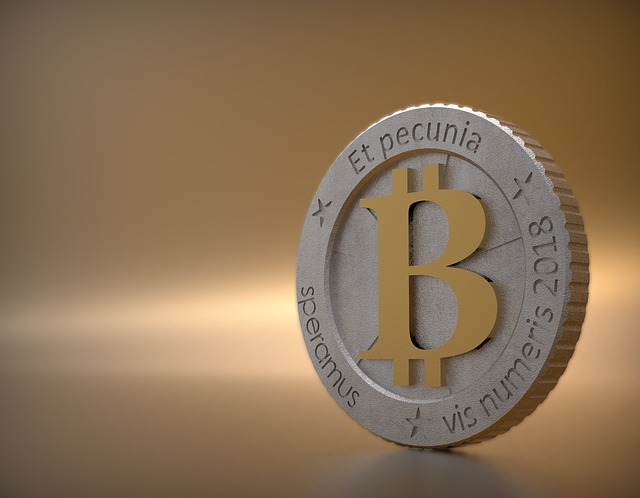Initial Coin Offerings (ICOs) are a crowdfunding mechanism for blockchain startups, selling digital tokens representing equity or future access via established cryptocurrencies. While offering global accessibility and exposure to new technologies, ICOs carry significant risks, including regulatory challenges, market fluctuations, and fraud. The 2014-emerging ICO boom led to regulatory responses after many fraudulent schemes; today, as regulations tighten, legitimate ICOs adapt with enhanced transparency and investor protection. Understanding different ICO structures—security-based vs utility tokens, and hybrid models—is crucial for informed investing in this evolving space.
“Unveiling the Mystery of Initial Coin Offerings (ICOs): A Comprehensive Guide for Beginners. This article serves as your ultimate introduction to ICOs, delving into their rise and fall in the crypto realm. From understanding the fundamentals to exploring diverse ICO structures, we simplify the complex mechanics behind these fundraising events. Additionally, we analyze regulatory implications and predict the future of ICOs in a dynamic market. By the end, readers will grasp the key aspects and potential risks associated with participating in Initial Coin Offerings.”
- Understanding Initial Coin Offerings (ICOs): A Beginner's Guide
- The Rise and Fall of ICOs in the Crypto Landscape
- How Do ICOs Work? Unlocking the Mechanics Behind the Curtain
- Common Types of ICO Structures and Their Impact on Investors
- Regulatory Scrutiny and the Future of Initial Coin Offerings
Understanding Initial Coin Offerings (ICOs): A Beginner's Guide

Initial Coin Offerings (ICOs) are a relatively new method for startups in the cryptocurrency and blockchain space to raise funds. Unlike traditional venture capital or stock offerings, ICOs allow companies to issue digital tokens that represent ownership shares or future access to their products or services. These tokens can be purchased using established cryptocurrencies like Ethereum or Bitcoin, making the process accessible to a global audience.
ICOs explained: In essence, an ICO is akin to a crowdfunding campaign but with a unique twist. Investors buy these digital tokens with the hope that the project will succeed and the token’s value will increase. This provides early backers with exposure to a potentially disruptive technology or business model. However, it’s crucial for beginners to understand the risks involved, such as regulatory uncertainty, market volatility, and the possibility of fraudulent schemes.
The Rise and Fall of ICOs in the Crypto Landscape

Initial Coin Offerings (ICOs) have been a game-changer in the crypto landscape, revolutionizing how projects raise funds and gain traction. They represent an alternative to traditional crowdfunding or venture capital, allowing startups to issue digital tokens in exchange for established cryptocurrencies like Ethereum or Bitcoin. This innovative approach has attracted a significant amount of investment and public interest since their emergence in 2014. ICOs promised investors the opportunity to participate early in promising projects, often with the potential for high returns.
However, the ICO boom also led to a surge in fraudulent schemes and ill-conceived projects, resulting in a regulatory response from various governments worldwide. The initial enthusiasm was met with caution as many projects failed to deliver on their promises, leading to significant losses for investors. This period highlighted the need for transparency, robust regulation, and investor protection in the cryptocurrency space. As regulations tighten, the ICO model is evolving, with more legitimate projects adopting safer fundraising methods while still leveraging blockchain technology’s potential.
How Do ICOs Work? Unlocking the Mechanics Behind the Curtain

Initial Coin Offerings (ICOs) have emerged as a revolutionary funding mechanism in the cryptocurrency space, offering a new way for startups to raise capital. Unlike traditional venture capital or stock offerings, ICOs leverage blockchain technology to create and distribute digital tokens to investors in exchange for established cryptocurrencies like Bitcoin or Ethereum. This process involves several key steps:
1. Token Creation: The first step is to design the token structure, defining its utility, supply, and distribution rules using smart contracts on a blockchain platform like Ethereum. These smart contracts automatically enforce the terms of the offering.
2. Whitepaper Release: Developers publish a whitepaper detailing the project’s purpose, technology, team, roadmap, and tokenomics (the economic aspects of the token). This document is crucial for attracting investors and ensuring transparency.
3. Token Distribution: During the ICO, tokens are made available for purchase using established cryptocurrencies. Investors participate by sending their funds to a designated smart contract, which then allocates the corresponding number of tokens based on the investment amount.
4. Token Listing: After the ICO, successful projects often list their tokens on cryptocurrency exchanges, enabling post-sale trading and increased liquidity for investors.
Common Types of ICO Structures and Their Impact on Investors

Initial Coin Offerings (ICOs) have gained significant traction as a means for startups to raise funds in recent years, offering an alternative to traditional financing methods. At their core, ICOs involve the creation and sale of digital tokens that represent ownership or access to a project or platform. These offerings come in various structures, each with distinct implications for investors.
One common type is the security-based ICO, where the tokens offered are deemed securities under existing financial regulations. This structure provides greater investor protection but often requires the project to comply with strict legal frameworks. On the other hand, utility tokens represent access or functionality within a specific platform and are generally less regulated. They enable investors to participate in the network’s growth and use the token for future transactions on the platform. Additionally, there are hybrid models that combine elements of both security and utility tokens, offering potential advantages and risks unique to each structure. Understanding these ICO types is crucial for investors seeking to navigate this evolving landscape and make informed decisions.
Regulatory Scrutiny and the Future of Initial Coin Offerings

The regulatory scrutiny surrounding Initial Coin Offerings (ICOs) has been a topic of intense debate and evolution in the cryptocurrency space. As ICOs gain popularity as a fundraising mechanism for new blockchain projects, governments and financial authorities worldwide are paying close attention. The primary concern is ensuring investor protection, preventing fraud, and maintaining market integrity. This scrutiny has led to a series of guidelines, regulations, and even bans in certain jurisdictions, shaping the way ICOs are conducted.
The future of ICOs looks set to be more transparent and highly regulated. Regulatory bodies are developing frameworks that define the parameters for legitimate ICOs, including compliance requirements for both issuers and investment platforms. This shift aims to provide clarity to investors, foster trust, and encourage innovation. As a result, potential investors can expect a more structured and secure environment when participating in future ICOs, ensuring that these offerings align with traditional financial regulations while leveraging the benefits of blockchain technology.
Initial Coin Offerings (ICOs), once seen as a revolutionary funding mechanism in the crypto landscape, have experienced a tumultuous journey. As we’ve explored through this comprehensive guide, understanding ICOs involves delving into their mechanics, evaluating various structures, and keeping pace with regulatory developments. While their rise sparked excitement for innovative projects, the fall of some high-profile ICOs underscored the need for caution and investor protection. Going forward, navigating the evolving regulatory landscape will be crucial for the sustainability and legitimacy of ICOs as a viable funding source in the dynamic world of cryptocurrency.
